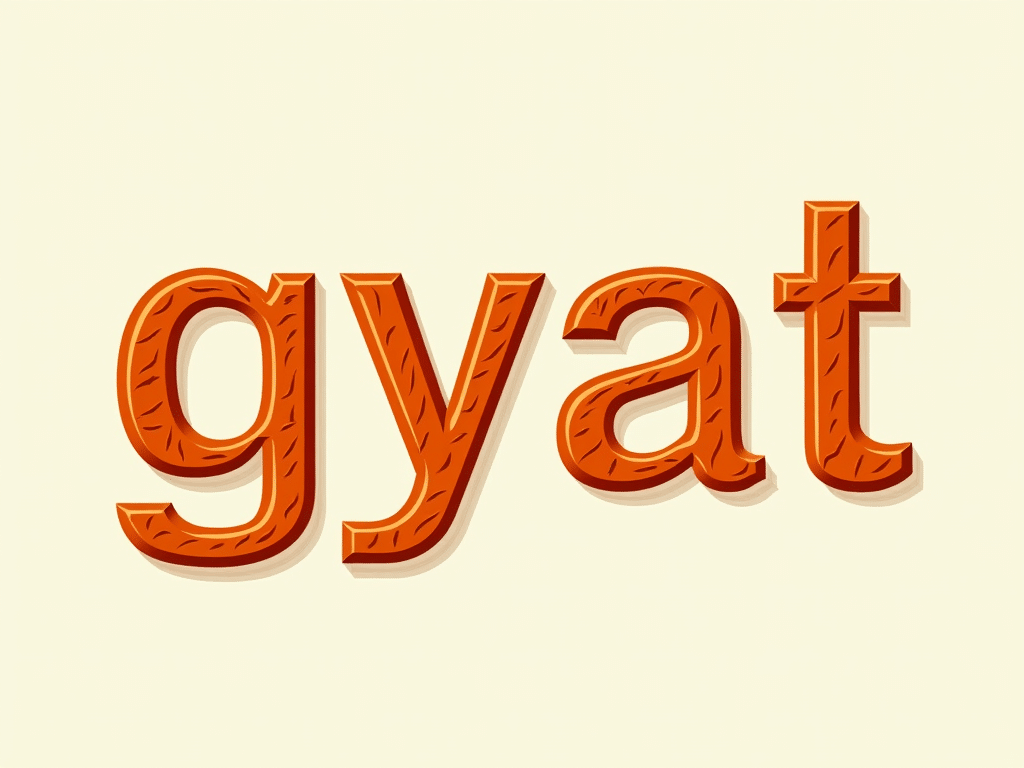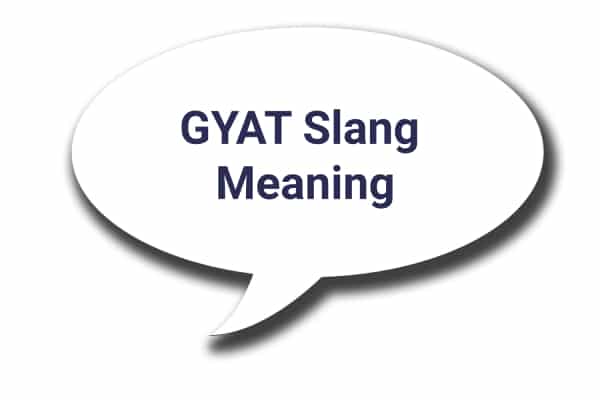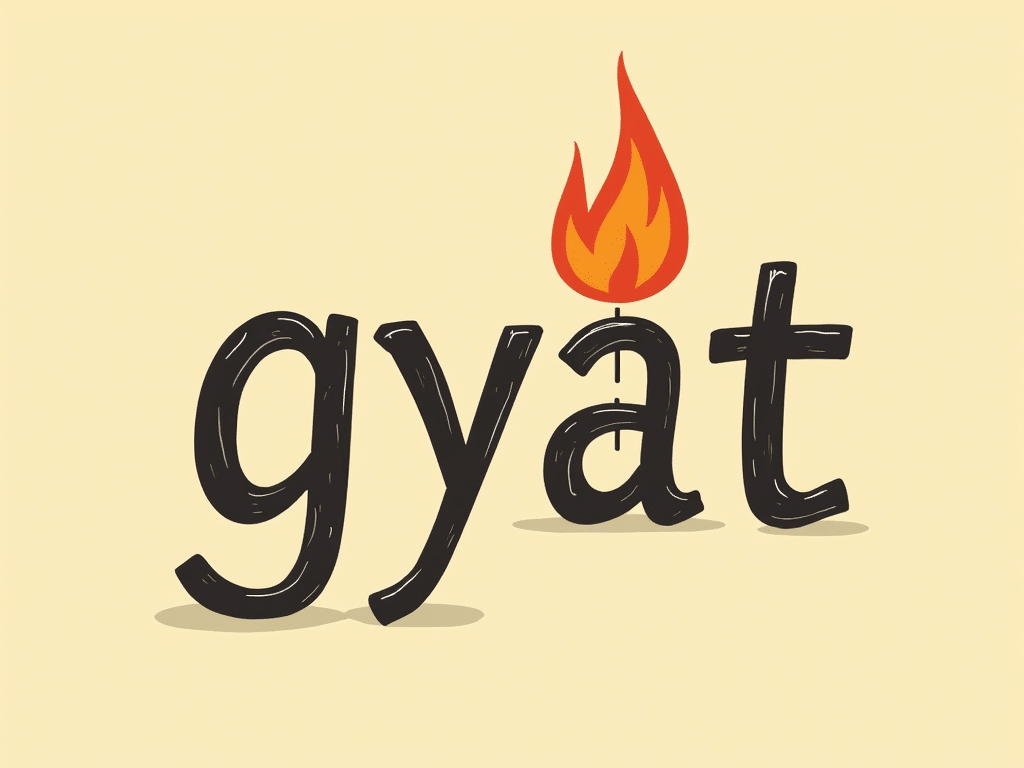In the ever-evolving world of internet slang, new terms pop up and spread like wildfire. One such term that’s taken the online world by storm is Gyat. With a staggering 200,500 monthly searches, it’s clear that people are eager to understand what this catchy slang means. Let’s dive into the world of GYAT meaning and uncover its meaning, usage, and cultural impact.
What Does Gyat Mean?
At its core, Gyat is an exclamation of surprise, admiration, or emphasis. It’s often used to express amazement, particularly when someone or something is exceptionally attractive or impressive. The term is essentially a shortened and stylized version of “goddamn” or “god damn.”

Origin of Gyat
The exact origin of “Gyat” is somewhat murky, as is often the case with internet slang. However, it’s believed to have emerged from African American Vernacular English (AAVE) and gained popularity through social media platforms, especially TikTok and Twitter.
Evolution of Gyat
Like many slang terms, “Gyat” has evolved since its inception. Initially used primarily as an expression of surprise, it has expanded to encompass a range of emotions and reactions.
Variations in Spelling
You might encounter several spellings of this term:
- Gyat
- Gyatt
- Gyaatt
- Gyaattt
These variations often indicate different levels of emphasis or excitement, with more ‘t’s generally suggesting a stronger reaction.
Gyat in Popular Culture
“Gyat” has made significant inroads into popular culture, particularly in the realms of social media and music.
Social Media Usage

On platforms like TikTok, Twitter, and Instagram, “Gyat” is frequently used in comments, captions, and even hashtags. It’s often accompanied by emojis like 😳 or 🥵 to further emphasize the reaction.
Music and Memes
The term has also found its way into song lyrics, particularly in hip-hop and rap music. Additionally, “Gyat” has become a popular element in internet memes, often used to caption images or videos of particularly impressive or surprising content.
How to Use Gyat
Using “Gyat” correctly is all about context and timing. Here are some examples of how you might use it in a sentence:
- “Gyat! Did you see that dunk?”
- “She walked in and I was like, gyat!”
- “The new iPhone just dropped. Gyat, it looks amazing!”
Remember, “Gyat” is very informal and is best used in casual, friendly conversations or social media interactions. It’s not appropriate for formal or professional settings.
Gyat vs. Similar Slang Terms
“Gyat” is part of a larger ecosystem of modern slang terms that have gained popularity, especially among younger generations. Let’s compare it to some similar expressions:
- “Sheesh”: Often used to express disbelief or impressiveness, similar to “Gyat” but less intense.
- “No cap”: Means “no lie” or “for real,” often used to emphasize truthfulness.
- “Rizz”: Refers to charm or the ability to attract a romantic partner.
- “Lit“: Describes something exciting or excellent, similar to how “Gyat” expresses amazement.
While these terms share some similarities in usage, “Gyat” stands out for its specific connotation of surprise or amazement, often with a physical or visual element.
Demographics of Gyat Usage
Understanding who uses “Gyat” can provide insight into its cultural significance:
- Age Group: Primarily used by Gen Z and Gen Alpha (born after 2010)
- Platform Popularity: Especially prevalent on TikTok and Twitter
- Cultural Origin: Rooted in African American Vernacular English (AAVE)
It’s important to note that while “Gyat” is widely used online, its usage may vary in different regions and social circles.
Potential Misunderstandings
As with any slang term, “Gyat” can be misunderstood or misused:
- Confusion with “GOAT”: Some might confuse “Gyat” with “GOAT” (Greatest Of All Time)
- Overuse: Using “Gyat” too frequently can dilute its impact or make communication unclear
- Inappropriate contexts: Using “Gyat” in formal or professional settings can be seen as unprofessional
To avoid misuse, it’s crucial to understand the term’s connotations and use it in appropriate, casual settings.
The Impact of Gyat on Language

The rise of “Gyat” reflects broader trends in language evolution:
- Digital influence: Shows how online platforms shape language development
- Generational markers: Acts as a linguistic identifier for younger generations
- Emotional expression: Provides a concise way to convey strong reactions
- Cultural exchange: Demonstrates how slang terms can cross cultural boundaries
While some view the proliferation of such slang negatively, linguists often see it as a natural part of language evolution.
Gyat in Different Online Communities
The usage of “Gyat” can vary across different online spaces:
- Gaming communities: Often used to react to impressive plays or game events
- Fashion-focused platforms: Might be used to compliment striking outfits or looks
- Sports discussions: Can express amazement at athletic feats
- Music forums: Might react to particularly impressive lyrics or performances
Each community may have slight variations in how “Gyat” is used or interpreted, showcasing the term’s versatility.
Controversies or Debates
As with many slang terms, especially those originating from specific cultural contexts, “Gyat” has sparked some discussions:
- Cultural appropriation: Some argue that the widespread use of AAVE-originated terms like “Gyat” by non-Black individuals is a form of cultural appropriation.
- Overuse concerns: Critics suggest that overuse of such terms can lead to the dilution of language or hinder effective communication.
- Age-appropriate usage: Debates exist about the appropriateness of such slang in educational or professional settings, particularly among younger users.
It’s important to be aware of these discussions and use the term respectfully and appropriately.
The Future of Gyat
Predicting the longevity of slang terms is challenging, but we can make some educated guesses about the future of “Gyat”:
- Mainstream adoption: As with terms like “cool” or “awesome,” “Gyat” could potentially enter mainstream vocabulary.
- Evolution of meaning: The term’s usage and connotations may shift over time, as is common with slang.
- Potential decline: Like many internet trends, “Gyat” could fade in popularity as new slang emerges.
Only time will tell how “Gyat” will evolve in the ever-changing landscape of internet language.
Conclusion
“Gyat” represents more than just a trendy exclamation; it’s a window into the dynamic nature of language in the digital age. From its roots in AAVE to its widespread use across social media platforms, “Gyat” showcases how quickly and effectively new linguistic expressions can spread and evolve.
Understanding terms like “Gyat” isn’t just about staying current with internet slang. It’s about recognizing the power of language to connect communities, express emotions concisely, and reflect cultural shifts. As we continue to communicate in increasingly digital spaces, slang terms like “Gyat” will undoubtedly play a significant role in shaping how we express ourselves online.
Whether “Gyat” becomes a lasting part of our lexicon or fades into internet history, its current popularity highlights the fluid and creative nature of language, especially among younger generations. As with all slang, using “Gyat” effectively requires an understanding of its meaning, appropriate contexts, and potential sensitivities.
For more insights into popular internet slang, check out our articles on ATP meaning and Based meaning.
FAQs About Gyat
Q: Is “Gyat” appropriate to use in professional settings?
A: No, “Gyat” is very informal and is best reserved for casual, friendly conversations or social media interactions.
Q: Can “Gyat” be offensive?
A: While not inherently offensive, it’s important to use “Gyat” respectfully and be aware of its cultural origins.
Q: How do you pronounce “Gyat”?
A: It’s typically pronounced as one syllable, similar to “gat” but with a slight “y” sound, like “gyat.”
Q: Is “Gyat” only used online, or do people say it in real life too?
A: While it originated and is most common online, some people, especially younger individuals, do use “Gyat” in spoken conversation.
By staying informed about terms like “Gyat,” we can better navigate the ever-evolving landscape of digital communication and understand the cultural currents shaping our language.







